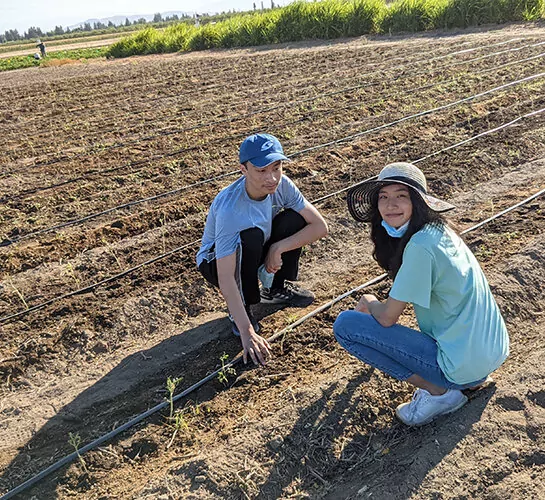Deeper Dive
Our project, the Artificial Intelligence Drought Assessment (AIDA) model, can predict the earliest signs of drought stress quickly and more accurately under field conditions using variables that are all physiologic and direct indicators of drought stress. Drought impacts 40% of the world’s population, and an estimated 55 million people globally are affected every year. It is the most serious threat to crops in nearly every part of the world, especially in California, where most crops rely on irrigation water. Drought induces stress in plants which negatively impacts crop yield and, ultimately, global food sufficiency. Witnessing the positive impact that artificial intelligence has brought to the fields of technology and medicine, we wanted to apply the same principles to agriculture, and revolutionize it in the same way. We have developed a tool to help farmers around the globe harness the power of machine learning and use it to predict drought stress quickly and accurately.
Utilizing the newly trained and validated AIDA model with actual field data, farmers will have a quick and robust way of determining drought stress in tomato plants. This new model can potentially replace CWSI, an old and complex method of drought stress determination. Approximately 26 billion gallons of irrigation water will be saved every year if all tomato farms in California use the AIDA Model. This novel technique of determining early drought stress in tomato plants can help farmers conserve water without sacrificing their yield, improving food and freshwater security even in harsh periods of drought.
The development of AIDA model and AIDA Score in our project was the most challenging piece of our project. The first difficulty that we faced arose while we were collecting and processing the vast amount of pixel and radiometric data needed to re-train the AIDA model. The original computer, a Raspberry Pi 3B, crashed due to the vast amount of data, which was about three times greater than what was used in the previous bench lab study. Luckily, we had a Raspberry Pi 400A model that we won as a prize from an earlier science fair competition, so we decided to switch our computer to the newest model of Raspberry Pi to solve this issue. The new computer performed well in programming and running the AIDA model. With the new computer came the new challenge of migrating the AIDA codes with its different libraries and programs to the new Raspberry Pi 400A. Usually when starting all over again with a new device for machine learning, it is difficult to have all these installs work the right way. There were compatibility issues with the different updated versions among the libraries and programs. We did extensive research to be able to figure everything out and make them all work together smoothly. Finally, the last challenge that we encountered was coding the prediction output program in Python to output an AIDA score using test plants. Outputting the AIDA score in Python was not readily apparent, but through research, online courses, and perseverance we were able to accomplish this successfully.
This project could not have been completed without the help of our mentor, Dr. Dave Goorahoo, and Science fair coordinator, Ms. Kay Barrie. Dr. Goorahoo provided us an experimental field at California State University, Fresno to conduct our experiment and shared valuable insight from his work as a professor and field researcher that enlightened us to possible applications and implications of our work in the real world. Mrs. Kay Barrie, our school science fair coordinator, also provided a lot of guidance on how we can further improve our project and always supported us at various science fair competitions.





